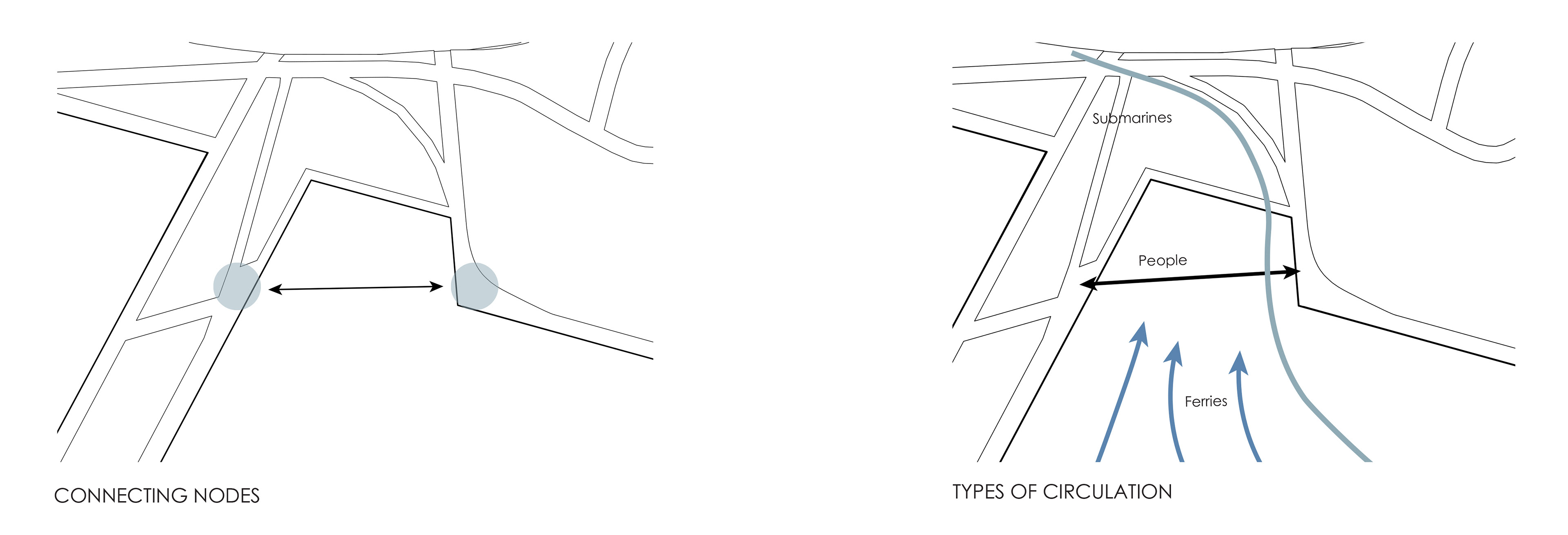According to the Department of Environmental Conservation, by 2100, the water levels of New York’s coasts are expected to rise at least eight feet. If no measures are further taken to prevent this, water levels will continue to rise even more. To combat this issue, the area of Chelsea in New York City will incorporate existing and new methods of transportation to navigate the city when it is flooded. This is accomplished through the further use of New York’s ferries as well as the addition of submarines that would travel underground in revived waterways that were once suppressed underneath Manhattan’s surface. The design of this transit hub goes through two different conditions. The first, where the current sea level remains, accommodates the use of the ferry system. The building then becomes submerged and accommodates passengers through the use of submarines. The building utilizes pontoons which are connected to the main structure to keep it afloat. These pontoons also lift the bottom slab upward as water levels rise until they lock themselves into place, after which a secondary structure is added to prepare the structure to be submerged.


Section at current water level.
Section at future water level.




